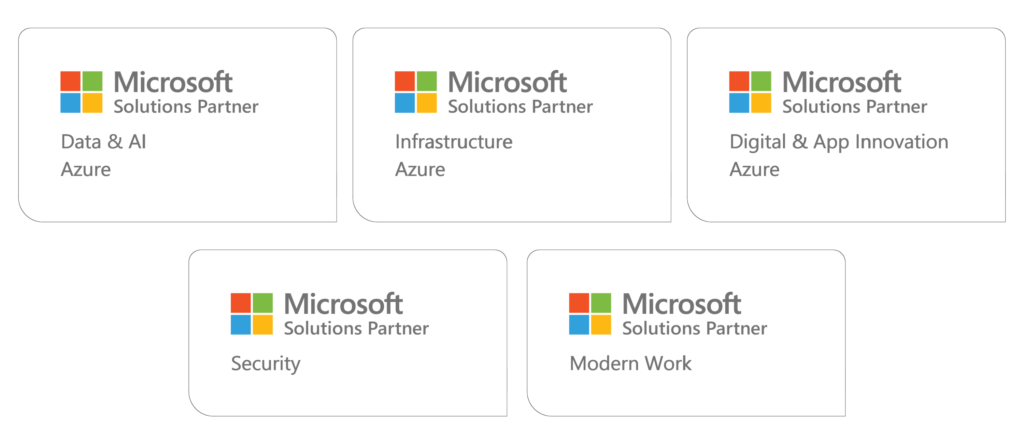MCE Microsoft 365 Administrator Expert (w/ MCA Microsoft 365 Endpoint Administrator) ACCELERATED COMBO Training & Certification Boot Camp – 6 Days (2 Courses, 2 Exams, 2 Certs)
Training Schedule and Pricing
Our training model blends knowledge and certification prep into one solution. Interact face-to-face with vendor certified trainers AT OUR TRAINING CENTER IN SARASOTA, FL - OR - attend the same instructor-led live camp ONLINE.
-
May062024Delivery Format:CLASSROOM LIVEDate:05.06.2024 - 05.11.2024Location:SARASOTAPrice Includes:Instructor Led Class, Official Courseware, Labs and Exams$4,9956 days
-
Jun032024Delivery Format:CLASSROOM LIVEDate:06.03.2024 - 06.08.2024Location:SARASOTAPrice Includes:Instructor Led Class, Official Courseware, Labs and Exams$4,9956 days
-
Jun242024Delivery Format:CLASSROOM LIVEDate:06.24.2024 - 06.29.2024Location:SARASOTAPrice Includes:Instructor Led Class, Official Courseware, Labs and Exams$4,9956 days
What's Included
2 Microsoft Official Courses
2 Microsoft Test Vouchers
1 Retake Voucher (per exam, if needed)
Microsoft Official Labs
Onsite Pearson Vue Test Center
Instructor Led Live Training
Just announced for July 2023 - Microsoft introduced two new certifications Microsoft 365 Endpoint Administrator Associate and Microsoft 365 Administrator Expert. The MCE certification requires the MCA prerequisite. Certification Camps exclusively offers this 6 day Microsoft Official Accelerated Combo Boot Camp.
Student learn how to deploy, configure, protect, manage, monitor services, devices and client applications in a Microsoft 365 environment. They manage identity, security, access, policies, updates, and apps for endpoints. They implement and manage endpoints using Microsoft Intune, Windows 365, Windows Autopilot, Microsoft Defender for Endpoint, and Azure Active Directory (Azure AD), part of Microsoft Entra.
The Microsoft 365 Certified MCA/MCE combo boot camp is taught using TWO Microsoft Official Courseware Courses -
MD-102T00: Microsoft 365 Endpoint Administrator
MS-102T00: Microsoft 365 Administrator Essentials
While attending this 6 day camp - students take two exams MD-102 Endpoint Administrator and MS-102 Microsoft 365 Administrator to achieve the Microsoft MCA & MCE Official Certifications.
Skills Gained -
Deploy Windows client
Manage identity and compliance
Manage, maintain, and protect devices
Manage applications
Deploy and manage a Microsoft 365 tenant
Implement and manage identity and access in Azure AD
Manage security and threats by using Microsoft 365 Defender
Manage compliance by using Microsoft Purview
Certification Camps training is not the typical PowerPoint & Lecture presentation training center.
Certification Camps has developed a comprehensive training / delivery format which focuses on learning beyond the core content accessible to any Microsoft training provider. Our program incorporates interactive demonstrations with explanations which go beyond the content of the book. Additional content, videos, labs & demonstrations are provided to expand on advanced topics - providing additional insight and perspective.
As a Microsoft Certified Solutions Partner - we adhere to the strict guidelines, standards and requirements to use Microsoft's exclusive curriculum. More over - our standards go beyond the "minimum requirements" set forth by Microsoft Learning.
We leverage our partnership benefits of courseware customization to build end to end technology training solutions. Students gain practical skills which can be implemented immediately.
With many training centers - learning starts on the first day of class and ends on the last day. Our boot camp training program is designed to offer resources before, during and after the training event.
CERTIFICATION CAMPS FACILITIES
CAMPUS - Certification Camps built out a stand alone training center (not a hotel conference room) with spacious classrooms, new desk, Herman Miller Aeron chairs & comfortable common areas. Each student has a dedicated desk with two monitors. Each classroom has a maximum of two rows - so everyone is able to be engaged without the "back row" feeling.
CLASSROOM EQUIPMENT - Students work on a dedicated Dell Client Desktop with 32GB memory with 512GB SSD drives - All Labs are executed the extremely fast Microsoft Data Center Hosted Lab Environment .
CAMPUS INTERNET - The campus is connected with a 1Gbps (1,000 Mbps) Verizon Fios Business Connection which provides complete internet (including VPN) access for students.
COMMON AREA - Amenties including snacks, drinks (Coffee, 100% juices, sodas, etc) all complimentary.
LODGING - We use the Hyatt Place Lakewood Ranch. This "upgraded" hotel offers extremely comfortable beds, great breakfast and very fast internet access.
NEAR BY - Many shops, restaurants and grocery options are available within walking distance. Additionally - the hotel provided scheduled shuttle services. Restaurants like Cheesecake Factory, California Pizza Kitchen, Panera Bread, Bone Fish Grill, Ruby Tuesday's, Five Guys, Chipotle, Chili's and over 20 additional choices in the immediate area.











